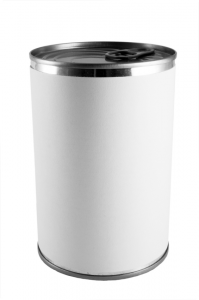This post originally appeared on the UC ANR Topics in Subtopics blog. Reprinted by permission.
Written by Ben Faber, UC Farm Advisor, Ventura & Santa Barbara Counties.
Growers are faced with an ever-changing list of commercial “tools”, each with the promise of providing some advantage to the farmer. Frequently, these are new fertilizer mixes presented as proprietary cocktails promoted and dispensed with promises of a multitude of profitable (yet improbable) benefits to the buyer. With the large number of new products available, and the number of salespeople promoting them, it is often difficult for growers to distinguish between products likely to provide real benefit, and those that may actually reduce the profitability of the farm.
In all situations when a company approaches the University or a commodity research board with a new product or technology for sale to California growers, these institutions act as grower advocates. They are charged with sorting through the available information; asking the right questions; getting the necessary research done if the available information warrants this pursuit; disseminating accurate information on these new technologies and products, and doing all that can help maximize grower profits now and in the future. When approached with a new product or technology it is obligatory to challenge claims with the following questions:
1. Is there some basic established and accepted scientific foundation on which the product claims are made?
Language that invokes some proprietary ingredients or mysterious formulations, particularly in fertilizers mixes registered in the State of California, raises red flags. A wide range of completely unrelated product benefit claims (such as water savings, pesticide savings, increased earlier yield) raises more red flags. Product claims that fall well outside of any accepted scientific convention generally mean the product is truly a miracle, or these claims are borderline false to entirely fraudulent. Some of the water treatment products on the market fall into this category and can easily be checked against some of these studies.
2. Has the product undergone thorough scientific testing in orchards?
Frequently, products are promoted based on testimonials of other growers. While testimonials may be given in good faith, they are most often not backed up by any real scientific testing where a good control was used to compare orchard returns with and without the product.
A “test” where a whole block was treated with a product and which has no reliable untreated control does not meet accepted standards for conducting agricultural experiments. Also, a treated orchard cannot reliably be compared to a neighboring untreated orchard; and a treated orchard cannot be compared to the same orchard that was untreated the previous crop year. Even a test with half a block of treated trees and half untreated is not considered dependable by any known scientific standard of testing.
Only a well designed, statistically replicated, multi-year trial allows for direct comparison of untreated versus treated trees with statistical confidence. Verifiable data from tests that meet acceptable standards of scientific design, along with access to raw baseline (before treatment) yield data from the same trees (preferably for the two years prior) should be used to determine the validity of test results provided.
3. Are the tests from a reliable source?
If the testing were not done by a neutral party, such as university scientists, agency, or a reputable contract research company using standard scientific protocols, this raises red flags. If the persons overseeing the tests have a financial interest in seeing positive results from the product, it raises red flags.
4. Does the product have beneficial effects on several unrelated farm practices?
A product that increases production of trees, makes fruit bigger, reduces pests, reduces water use, and reduces fertilizer costs, is more than a little suspicious. In reality, if such a product really existed, it would not need any testing at all because its benefits would be so obviously realized by the grower community that it would spread rapidly by word of mouth and embraced by the entire grower community.
5. Are other standard and proven farm products put down in the new product sales delivery?
If a new product vendor claims that their product is taken up 15 times faster than the one growers are currently using, or is 30 times more efficient, it probably costs 15 to 30 times more per unit of active ingredient than the standard market price. Growers should always examine the chemical product label to see what active ingredient they are buying. There has to be a very good reason to pay more for an ingredient where previously there had been no problem supplying the same ingredient at a cheaper price to trees in the past.
So what is a grower to do? New products come and go. Snake oil products often disappear rapidly, when their efficacy fails to materialize after application. Products that confound their purported results with fertilizers or growth stimulators can persist, but eventually they too fail to live up to expectations at some point and will fade from popularity. Try to obtain some kind of consensus with university‐based research or other peer reviewed research reports, field efficacy trials that you run for yourself, and not on the testimonials of others. If you decide to conduct your own trials, they must be replicated and statistically analyzable, otherwise they are little more than anecdotal observations that have little value in quantifying the effects of a product or practice. For more help with trials, seek out University Extension advisors and specialists. This is their job, and they are willing partners in field research. After awhile, you will be able to ascertain the nature of the “oil” before you purchase it.



Leave a Reply